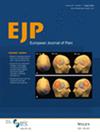Investigating the Influence of Experimentally Induced Secondary Hyperalgesia on Pain Prediction Error Encoding in Healthy Individuals: A Novel Virtual Reality Protocol
Abstract
Background
Persistent mismatches between predicted and actual pain-related signals, namely prediction errors (PEs), can cause maladaptive overestimation of pain intensity, a common feature of chronic pain states. Experimental protocols used to assess the contribution of central sensitisation (CS) to dysregulated prediction systems are lacking. To address this, we implemented a novel virtual reality (VR) paradigm to evoke PEs during mechanical stimulation following experimentally induced CS via the high-frequency stimulation (HFS) model.
Methods
Twenty healthy volunteers underwent HFS on the right forearm. Mechanical pain sensitivity (MPS) was assessed through pinprick stimuli before and 30 min post-HFS to evaluate secondary hyperalgesia. Following this, participants received mechanical stimuli at proximal (sensitised area) and distal (non-sensitised area) points from the HFS site, with visual cues presented on their arm via VR alongside hand tracking technology indicating the stimulus location, allowing participants to make pain predictions. Cues were either congruent (matching) or incongruent (mismatching) with the actual stimulus site to evoke PEs.
Results
Results showed that MPS significantly increased following HFS, confirming secondary hyperalgesia. Stimuli in sensitised areas induced more pain than in non-sensitised areas. Incongruent cues successfully elicited PEs across all locations; however, expectations modulated pain perception only in non-sensitised areas. Similarly, during incongruent trials, PEs diminished over time (reflecting adaptive learning) only in non-sensitised areas.
Conclusions
These data demonstrate that pain expectations can influence pain perception differently in centrally sensitised and non-sensitised states. We propose this protocol as a good candidate to assess how cognitive and psychological manipulations influence PEs at various stages of CS.
Significance Statement
We introduce a novel VR paradigm to show that secondary hyperalgesia alters how pain expectations and prediction errors influence pain perception, highlighting distinct adaptive learning patterns.


 求助内容:
求助内容: 应助结果提醒方式:
应助结果提醒方式:


